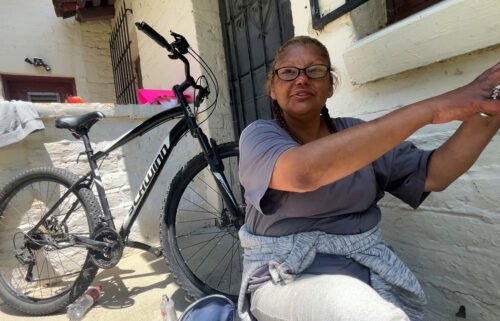Telehealth medication abortions surged since Dobbs decision. They could become harder to access if the latest court decision stands
By Annette Choi, CNN
Medication abortions provided by virtual-only providers accounted for an increasing share of total abortions in the United States, since the Supreme Court eliminated the constitutional right to abortion in June 2022, according to a new report by the Society of Family Planning, a nonprofit focused on abortion and contraception.
While total abortions decreased by 2% from April to December 2022, medicated abortions via telehealth increased by 136%. In April, there were less than 4,000 medicated abortions provided virtually, and in December, there were more than 8,500.
Medication abortions already accounted for more than half of all US abortions in 2020, according to the Guttmacher Institute. The new data from the Society of Family Planning suggests that rate likely increased in the aftermath of the Dobbs decision.
A federal appeals court voted to freeze parts of a Texas judge’s ruling that would have suspended the US Food and Drug Administration’s approval of mifepristone, the first drug in the two-step medication abortion regimen late Wednesday. The freeze means that the abortion pill will still be available in the United States, but could be harder to get. The appeals court said that the judge’s suspension of several revisions to the drug’s rules since 2000 — including one that makes the pills available by telehealth and in the mail — could go into effect.
On Thursday, the Department of Justice requested the Supreme Court intervene in the emergency dispute over the abortion drug.
The Society of Family Planning collects data from abortion providers nationwide including from clinics, private medical offices, hospitals and virtual providers. More than 80% of providers the nonprofit identified participated in the analysis. Data from popular overseas telehealth provider Aid Access medication abortion is not included in the report, since it is not part of the formal US healthcare system. However, a study from last November found that there were about 6,500 requests made per month to Aid Access for medication abortion.
Before the Dobbs decision, 5% of all abortions were provided via telehealth, and after the ruling, that rate grew to 9%. While the share of telehealth abortions dropped off in a few states, including Georgia and Wyoming, it surged in 27 states across the country last year.
Wyoming by far recorded the highest rate of telehealth abortions both before and after the Dobbs ruling of any state. Before the ruling, 92% of abortions in Wyoming were provided via telehealth, and in the months following the decision, that rate dropped to about 80%.
Despite the heavy dependence on virtually provided medication abortions, Wyoming became the first state to explicitly ban the use of abortion pills with a law that takes effect on July 1.
In Idaho, 17% of all abortions that took place before the ruling were provided through virtual-only services. In the months that followed, that rate jumped to 43%. That’s an increase of 26 percentage points — the largest of any state.
Several of the 17 Democratic-led states involved in the Washington lawsuit that sued to expand access to abortion pills, such as Colorado and Maine, also recorded some of the most substantial increases in telehealth abortions as a percent of all abortions. In those states, and the District of Columbia, 8% of abortions before the Dobbs ruling were provided virtually. And afterward, the rate increased to nearly 13%.
The-CNN-Wire
™ & © 2023 Cable News Network, Inc., a Warner Bros. Discovery Company. All rights reserved.



